Arthritis is the leading cause of disability, characterised by recurrent pain from inflammation in one or more joints of the body. While arthritis has various forms and is typically associated with the elderly, it can actually affect anyone, regardless of age or gender. The question we will answer in this article is – Can light be used effectively for treatment of some or all types arthritis?
Contents
Introduction & Video
Arthritis Light Therapy evidence
Mechanism of action
Summary
Recommended Product
References
Medical & Healthcare Disclaimer
The information contained in this article is not intended or implicitly suggested to be an alternative for professional diagnoses, or profesionally recommended treatments & medical advice. Absolutely all of the content, including the article text itself, images, comments and other information, contained on this web page is for non-specific information purposes only. We strongly suggest that one should never ignore professional health/medical advice and we strongly suggest that one must not delay seeking a professionally recommended medical treatment because of information attained via reading this article/website. The products sold or recommended on this web site are absolutely not for the diagnosis, prevention, monitoring, treatment or alleviation of any specific disease, injury or disability.
Introduction
Some sources of near infrared and red light have actually been used clinically for the treatment of arthritis since the late 1980s. By the year 2000, enough scientific evidence existed to recommend it for all arthritis sufferers1 regardless of cause or severity. Since then there have been several hundred quality clinical studies trying to refine the parameters for all joints that can be affected. The effectiveness is apparent in some people, as this news report shows:
As of this year, some forms of appropriate light therapy are regarded as a reliable treatment for the pain of arthritis, but could perhaps also be a proactive health tool against the root causes of osteoarthritis, rheumatoid arthritis and various other inflammatory joint issues. The interest regarding use of light on arthritis should come as no surprise, as pain relief and accelerated healing are the most well studied effects of light therapy.
Light therapy and its use on arthritis
The first major symptom of arthritis is pain, often excruciating and debilitating as the condition progresses. This is the first way in which light therapy is studied – by potentially reducing the inflammation in the joint and thus reducing the pain. Practically all areas have been studied in human clinical trials including on; the knees5-12, 33, shoulders15,38, jaw26,27,36,37, fingers/hands/wrists14,15,40, back34,35, elbows, neck17,29 and ankles/feet/toes.
The knees seem to be the most well studied joint in humans, which is understandable considering it is perhaps the most commonly affected area. Arthritis of any type here has serious implications like disability and inability to walk. Fortunately most studies using red/IR light on the knee joint show some interesting effects, and this is true over a wide range of treatment types. Fingers, toes, hands and wrists appear to be the simplest to address of all arthritic problems, due to their relatively small size and shallow depth.
Osteoarthritis and rheumatoid arthritis are the major types of arthritis being studied, due to their prevalence, although there is reason to believe the same treatment might be of interest for other types of arthritis (and even unrelated joint problems such as injury or post-surgery) such as psoriatic, gout and even juvenile arthritis. Treatments for osteoarthritis tend to involve direct application of light over the affected area. Successful treatments for rheumatoid arthritis can be the same but some also involve application of light to the blood18,19,21. As rheumatoid arthritis is an autoimmune condition this makes sense – the joints are just the symptom, the actual root problem is in the immune cells.
The mechanism – what red/infrared light does
Before we can understand the interaction of red/IR light with arthritis, we need to know what causes arthritis.
Causes
Arthritis can be the result of chronic inflammation of a joint, but can also develop suddenly, after periods of stress or injury (not necessarily injury to the arthritic area). Usually the body is able to repair the daily wear and tear on joints, but can lose this ability, leading to the onset of arthritis.
- A reduction in oxidative metabolism, the ability to convert glucose/carbohydrates into energy is linked strongly to arthritis.
- Clinical hypothyroidism is frequently associated with arthritis30, with both often diagnosed around the same time.
- More recent studies have shown more details of the metabolic defect in glucose metabolism is linked to rheumatoid arthritis (http://scopeblog.stanford.edu/2013/09/16/important-metabolic-defect-identified-in-immune-cells-of-rheumatoid-arthritis-patients/)
- There’s a definite hormonal link to most types of arthritis
- This is shown by how becoming pregnant can completely clear up (or at least change) arthritic symptoms in some women.
- Rheumatoid arthritis is also 3+ times more frequent in women than in men (and harder to women to cure), further confirming the hormonal link.
- Adrenal hormones (or lack thereof) have also been linked to all arthritis for over 100 years now20.
- Changes in liver health/function are strongly linked to rheumatoid arthritis
- Calcium deficiency is also linked to arthritis, along with various other nutrient deficiencies.
- In fact, abnormal calcium metabolism is present in all types of arthritis.
The list of causes goes on, with many factors potentially playing a role. While the exact cause of arthritis is still debated in general (and different for osteo / rheumatoid etc.), it’s obvious there is some connection to lowered energy production and the downstream effect that has on the body, eventually leading to the joint inflammation.
Early treatment of arthritis with ATP (the cellular energy metabolism product) had positive results20, and this is the same energy molecule that red/IR light therapy helps our cells to produce….
Mechanism
The main hypothesis behind light therapy is that red and near infrared wavelengths of light between 600nm and 1000nm are absorbed by our cells39, increasing natural energy (ATP) production. This process is termed ‘photobiomodulation’ by researchers in the field. Specifically we see an increase in mitochondrial products such as ATP, NADH, and even co2 – the normal result of a healthy, unstressed metabolism.
It even seems that our bodies have evolved to be penetrated by, and usefully absorb, this type of light. The controversial part of the mechanism is the specific chain of events on the molecular level, of which there are several hypotheses:
- Nitric oxide (NO) is released from cells during light therapy. This is a stress molecule that inhibits respiration, so sending it out of the cells is a good thing. The specific idea is that red/IR light is dissociating NO from cytochrome c oxidase in the mitochondria, thus allowing oxygen to be processed again.
- Reactive oxygen species (ROS) are released in small amounts after light therapy.
- Vasodilation is potentially stimulated by red/IR light therapy – something related to NO and very significant for joint inflammation and arthritis.
- Red/IR light also has an effect on (cellular) water, increasing the distance between each water molecule. What this means is the physical properties of a cell change – reactions happen more smoothly, enzymes and proteins have less resistance, diffusion is better. This is inside cells but also in the blood and other intercellular spaces.
Much of life (on the cellular level) is not yet understood and red/IR light seems to be fundamental to life in some way, much more so than many other colours/wavelengths of light. Based on the evidence, it seems likely that both of the above hypotheses are happening, and probably other as yet unknown mechanisms too.
There is plenty of evidence of a broader systemic effect from irradiating veins and arteries anywhere on the body, plus increased blood flow/microcirculation and reduced inflammation locally. The bottom line is that red/IR light reduces local stress and so helps your cells to function optimally again – and the cells of the joints are no different in this.
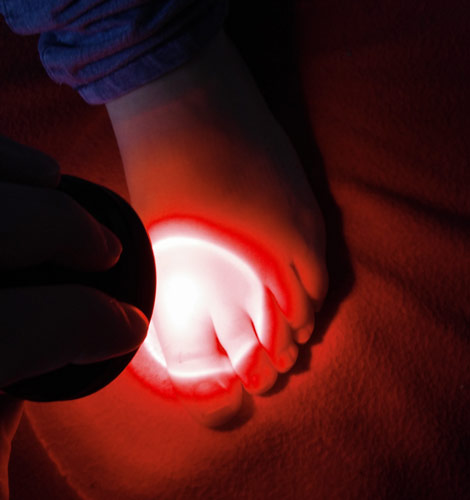
Red or Infrared?
The main difference between red (600-700nm) and infrared (700-100nm) light seems to be the depth to which they can penetrate, with wavelengths higher than 740nm penetrating better than wavelengths under 740nm – and this has practical implications for arthritis. A low power red light may be appropriate for arthritis of the hands and feet, but it could fall short for arthritis of the knees, shoulders and bigger joints. The majority of arthritis light therapy studies use infrared wavelengths for this very reason and the studies comparing red and infrared wavelengths show better results from the infrared.
Ensuring penetration to the joints
The two main things affecting tissue penetration are the wavelengths and the strength of the light hitting the skin. In practical terms, anything below the wavelength of 600nm or over the wavelength of 950nm won’t penetrate deeply. The 740-850nm range seems to be the sweet spot for optimal penetration and around 820nm for maximum effects on the cell. Strength of the light (aka power density / mW/cm²) also affects penetration with 50mW/cm² over a few cm² area being a good minimum. So essentially, this boils down to a device with wavelengths in the 800-850nm range and greater than 50mW/cm² power density.
Summary
- Light therapy has been studied in regards to arthritis and other types of pain for decades.
- Light studies look at all types of arthritis; osteo, rheumatoid, psoriatic, juvenile, etc.
- Light therapy supposedly works by improving energy production in joint cells, which may help to lower inflammation and normalise function.
- LEDs and lasers are the only devices that are well studied.
- Any wavelength between 600nm and 1000nm is studied.
- Infrared light around the 825nm range seems best for penetration.
Recommended light for arthritis
References
- Low level laser therapy for osteoarthritis and rheumatoid arthritis: a metaanalysis. Brosseau et al. 2000.
- Low level laser therapy (Classes I, II and III) for treating osteoarthritis. Brosseau et al. 2004.
- Effect of low-level laser therapy on the expression of inflammatory mediators and on neutrophils and macrophages in acute joint inflammation. Alves et al. 2013.
- Can osteoarthritis be treated with light? Michael R Hamblin, 2013.
- Effect of low-level laser therapy (904 nm) and static stretching in patients with knee osteoarthritis: a protocol of randomised controlled trial. Ferreira de Meneses et al. 2015.
- Does addition of low-level laser therapy (LLLT) in conservative care of knee arthritis successfully postpone the need for joint replacement? Ip et al. 2015.
- High-intensity versus low-level laser therapy in the treatment of patients with knee osteoarthritis: a randomized controlled trial. Kheshie et al. 2014
- Short-term efficacy of physical interventions in osteoarthritic knee pain. A systematic review and meta-analysis of randomised placebo-controlled trials. Bjordal et al. 2007.
- Efficacy of low-level laser therapy applied at acupuncture points in knee osteoarthritis: a randomised double-blind comparative trial. Al Rashoud et al. 2014.
- Effect of low-level laser therapy in patients with chronic knee osteoarthritis: a single-blinded randomized clinical study. Alghadir et al. 2014.
- Influence of various laser therapy methods on knee joint pain and function in patients with knee osteoarthritis. Gworys et al. 2012.
- Efficacy of low level laser therapy associated with exercises in knee osteoarthritis: a randomized double-blind study. Alfredo et al. 2012.
- The effect of low-level laser in knee osteoarthritis: a double-blind, randomized, placebo-controlled trial. Hegedus et al. 2009.
- Synergic effects of ultrasound and laser on the pain relief in women with hand osteoarthritis. Paolillo et al. 2015.
- A systematic review of low level laser therapy with location-specific doses for pain from chronic joint disorders. Bjordal et al. 2003.
- Meta-Analysis of Pain Relief Effects by Laser Irradiation on Joint Areas. Ho Jang et al. 2012.
- Low Level Laser Therapy (LLLT) for Neck Pain: A Systematic Review and Meta-Regression. Anita R Gross et al. 2013.
- The influence of intravenous laser irradiation of the blood on the dynamics of leptin levels and the quality of life of the patients presenting with rheumatoid arthritis. Burduli et al. 2015.
- Reduction of IL-20 Expression in Rheumatoid Arthritis by Linear Polarized Infrared Light Irradiation. Imaoka et al. 2014.
- Treatment of Rheumatoid Arthritis with ATP. Birger Carlström and Olle Lövgren. 1949.
- Low-level laser therapy in different stages of rheumatoid arthritis: a histological study. Alves et al. 2013.
- Low-level laser therapy for zymosan-induced arthritis in rats: Importance of illumination time. Castano et al. 2007.
- Effects of low-level laser therapy at wavelengths of 660 and 808 nm in experimental model of osteoarthritis. da Rosa et al. 2012.
- Anti-inflammatory activities of light emitting diode irradiation on collagen-induced arthritis in mice (a secondary publication). Kuboyama et al. 2014.
- Photobiomodulation of pain and inflammation in microcrystalline arthropathies: experimental and clinical results. Soriano et al. 2006.
- Low-level laser therapy stimulates tissue repair and reduces the extracellular matrix degradation in rats with induced arthritis in the temporomandibular joint. Lemos et al. 2016.
- Effect of low-level laser on healing of temporomandibular joint osteoarthritis in rats. Peimani et al. 2014.
- Effect of light-emitting diode (LED) therapy on the development of osteoarthritis (OA) in a rabbit model. Oshima Y. 2011.
- Efficacy of low-level laser therapy in the management of neck pain: a systematic review and meta-analysis of randomised placebo or active-treatment controlled trials. Chow et al. 2009.
- Rheumatoid arthritis and thyroid abnormalities. Staykova. 2007.
- Laser Ther. 2011; 20(3): 205–215. Is light-emitting diode (LED) phototherapy really effective? Won-Serk Kim and R Glen Calderhead
- An Bras Dermatol. 2014 Jul-Aug;89(4):616-23. Effects of low-power light therapy on wound healing: LASER x LED. Chaves ME et al., 2014.
- Improvement of pain and disability in elderly patients with degenerative osteoarthritis of the knee treated with narrow-band light therapy. Stelian et al. 1992.
- In chronic low back pain, low level laser therapy combined with exercise is more beneficial than exercise alone in the long term: a randomised trial. Djavid et al. 2007.
- Laser therapy: a randomized, controlled trial of the effects of low-intensity Nd:YAG laser irradiation on musculoskeletal back pain. Basford et al. 1999.
- Evaluation of low-level laser therapy in the treatment of temporomandibular disorders. Cetiner et al. 2006.
- Lasertherapy efficacy in temporomandibular disorders: control study. Santos Tde et al. 2010.
- Low-power laser treatment in patients with frozen shoulder: preliminary results. Stergioulas. 2008.
- Exact action spectra for cellular responses relevant to phototherapy. Karu et al. 2005.
- Positive effects of low level laser therapy (LLLT) on Bouchard’s and Heberden’s osteoarthritis. Baltzer et al. 2016

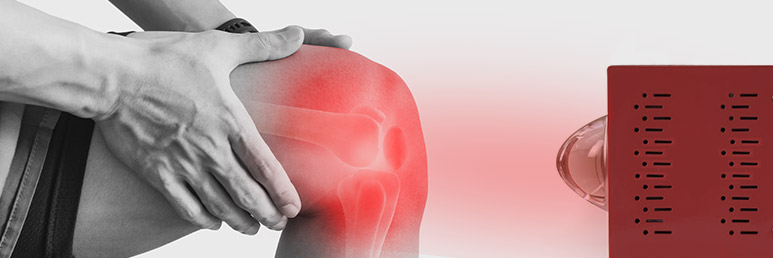
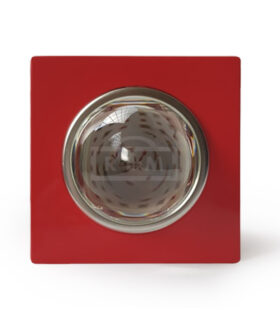
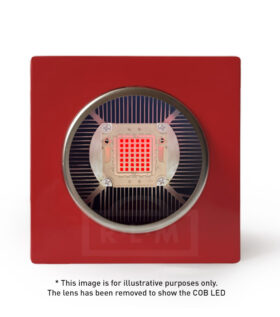
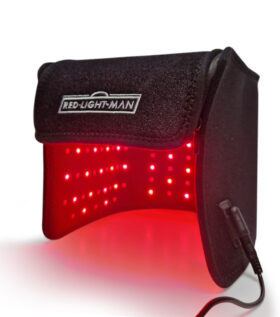
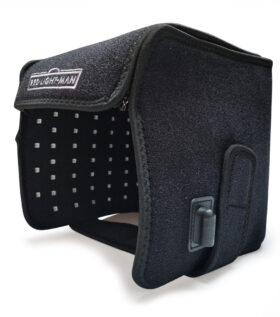
Great to see more evidence that poor bioenergetics are involved in a large number of degenerative conditions like arthritis. Red light coupled with improvements in diet seems to be a great therapy! Thanks for this.
Thank you Joe for all the information, your products are great, using it on wrinkles, osteoarthritis, foot fungus , ear infections, teeth care, and much much more. Very effective with tennis elbow too.
I want to win the infrared light device on RPF! I don’t have anything for my setup yet.
I’m going to try this on my girlfriend’s mom who has pretty bad arthritis
A bit off topic but not too far….
My husband (guitarist) uses the red light on his strumming hand and arm. He has developed dystonia and it seems to help with inflammation. Have you heard of any treatment of dystonias with the red light?
Thanks
I have Dystonia in my neck back and jaw is this something that could help me if so where can I buy the light and what settings would be most beneficial or is there a clinic I can go to for treatment.
Thank you..
Interesting. I’m looking forward to testing out red light therapy for mitochondrial and healing stimulation.
Red Light Man,
Thanks for sharing how light therapy can improve arthritis. I’m very new to the topic of light therapy, so it’s fascinating to discover how this type of therapy can treat different illnesses.
Dennis
thanks for all the tips on different applications. I think I need to just live in a red light world 24/7 to address all my issues
Question: is it effective for treating sciatica or neurodegenerative diseases?
There are lots of studies now on various nerve related and neurodegenerative concerns. You’ll want near-infrared rather than red if you want to try (due to the penetration) and aim for high doses.
Thanks, Joe. Might the LED Hand Pain Reliever mitt as advertised in Hammacher-Schlemmer possibly hurt my 98 year-old Mother’s painful arthritic hands? Many thanks. Ron
I’m not sure as I’ve never seen it. As long as it has a power density of 50mW/cm2+ and wavelengths around 750-850nm, it should match the parameters seen in studies. I don’t know about the safety though, or if it could hurt the hands through some other mechanism.
I had surgery to remove arthritis in my thumb. The surgeon took out bone and replace with a tendon. It has been 11 weeks since surgery now my hand is not responding to therapy due to scar tissue. I was wondering if I would be a candidate for red light therapy?
Sure. It would have been better to begin light therapy before/after surgery rather than 11 weeks later but even now may potentially be better than nothing. Some studies indicate the potential to reduce inflammation and to help stop any further scar tissue and hopefully help to remove any scar tissue that is not finalised in place yet.
Hello, It would be more useful if you could recommend bulbs or lamps like this. And also make more test about the different lamps. There are so many out there and for example you did not measure any lamp for stimulate collagen: those red light (not infrared) from 600-700 and with a decent mW of output. Sadly, 99% of those for growth plants are very low on output power.
Anyway. Please, which type of bulb is this? Thank you for the information. Good, but not great job 😉
Hey Ralph,
I don’t think you want to ‘stimulate collagen’ as this is usually the result of metabolic stress, leading to wrinkles, scars, fibrosis, etc. If you want healthy skin, you need healthy skin cells, not collagen production.
What tests do you want exactly? The power density in mW/cm2 is measured for all of our light devices.
I don’t think you can use a ‘bulb’ for this type of treatment, as the heat makes it impossible to get a high enough dose for deep penetration.
Lights for growing plants aren’t usually too low on output power, the problem is the wide beam angle makes the power density so weak, especially at distance. You want a spotlight/searchlight type narrow beam, not a wide angle grow light type beam.
Thanks Joe, we just ordered one of the mini 830 models!
where can I purchase this light therapy devive
Hey Bill, only on our website for now. It will be back in stock early next week.
Hi, can you please let me know when the red/ infrared mini will be back in stock! Is this the right one to use for R.A. ( mainly in my hands, fingers and wrist) Thank you
I do not provide medical advice for specific conditions
Hi Joe,
Ran across your website while researching something else for my RA…….very interesting, fascinating. I’ve had very aggressive RA for 12+ years and it’s definitely done some permanent damage to some of my joints…..elbows, wrists, hands, hips, knees, ankles, feet, shoulders, etc. I’ve tried to use minimal drugs, but do have to take some. I am careful with what I eat, that definitely helps. I’m very interested in your light products, and am wondering what you would suggest for best results since many of my body joints are affected by the RA. My husband would probably use it too, being a hard worker in construction for years, he is looking at hip replacements also. I’ve already had one replaced! Looking forward to hearing back from you!
Would this light work on an enlarged prostate?
I remember seeing some study abstracts about the prostate, from some russian studies:
/pubmed/16419474
/pubmed/16856453
It seems like they did get a reduction in size of the prostate, although I can’t get the full study to pull the wavelength/power density and treatment protocol. Figuring out which surface of the body the prostate is closest to seems important if you wanted to try light therapy.
Joe,
I have the Mini 670. I tore my AC joint in my shoulder and have it taped with white tape to hold it in place, Can the red light get through the tape and have any healing effect?
Thanks!
Hi Wyatt,
At least some of it should penetrate.
Most of the studies in this area focus on the near infrared 830nm wavelengths.
Red is more suited for skin issues.
Thank you Joe!
Hey Joe,
How would you target flammation achilles tendons with your Red-infrared combo light? Also should i count the distance of light from the tip of the glass cone?
Hi, need one device rechargeable with usb cable for in m y motorhome
Osteoarthritus in both knees also siatica down one side.
Can you suggest which device suitable please.
What treatment times/frequencies would you use for healthy skin?
More important than either of those is the irradiance, which studies suggest should be between 20mW/cm2 and 100mW/cm2 for skin. Red is more favoured. You only need 5-10 minutes if you are in the above irradiance range.
Sounds promising! Recently diagnosed with osteoarthritis in the hip. Which light would I use for this area, and how might it help with the pain and degeneration so I can continue to stay active in yoga and pickleball?
I cannot offer specific medical advice. I have seen the wavelength of 830nm used repeatedly in studies.
Some studies show that an increase in cellular energy and CO2 help to limit the inflammation and put your cells back on the path to healing.
I have osteoarthritis in both knees, I am looking at the infrared 830 mini.
however, my partner’s hair is thinning so I was thinking of getting the combo mini instead so that he can use it on his hair and I can use it on my knees, aswell as my hair and face.
my question is, if I get the combo light to treat all issues, will it affect the effectiveness for my knees? or will I just need to use the combo light for a longer time frame to get the same results as the infrared 830 mini? my arthritis is my main concern and I do not want to hinder my chances of getting better
Thanks
Hi, I can’t afford to get the larger Infrared 830 Light Device at this time. So would the Infrared Mini 830 Light Device be a good starting point for arthritis. Also, my husband has nerve damage in right foot, would this help. Thanks for your advice.
Hi Debbie, potentially, although I would not make definitive medical recommendations. In general a smaller light should be fine for smaller joints. For larger joints like the hips, shoulders and knees perhaps a more powerful light would be more appropriate. The same wavelengths studied for arthritis are also studies for nerves.
I have arthritis on my hands swollen knuckles pain and stifness ; also severe sciatica pain on one side that left me limping and the leg never fully recovered sometimes woke up in the midle of the night with toes and leg cramped. Please recomend one device that can be useful waiting for your response and thanks you very much
I’m interested in getting a device for my elderly father, who has had hip replacement surgery and suffers from pain and some arthritis in hip, lower back, knee and foot. He has a lot of pain when doing any exercise and keeps falling because of poor balance. He has suffered a few minor strokes and his speech is somewhat slurred at times, and he is experiencing memory problems. I have heard that light therapy can help with dementia and stroke, but should not be used too frequently or the initial results can be lost with too much frequency. Would the body combo be best, or the infrared light or the regular combo infrared light? Also when will the body combo light be in stock? To improve cognitive function, how close should you put these lights to your head?
Thanks.
Do you have a device that would help my neck arthritis pain and possibly slow down the progression? Also, do you ship to Canada? Thank you.
Maybe, but I cannot offer specific recommendations to medical conditions.
Yes, we ship everywhere in the world.
I have arthritis in my left knee joint. Is the infrared 830 the best machine to give pain relief?
All I can say is that this 830nm wavelength is frequently studied for various causes of knee pain.
Hi:
I have a bruised lateral meniscus in my right knee. An MRI revealed no damage, yet my knee continues to be aggravated. My ortho told me my knee would never get “better”, that the best we could do was manage the discomfort and pain. Though I’m only 42, I have an old knee in a young body. (I’ve had an ACL, PCL, LCL reconstruction and partial medial menisectomy). After 3 months of acupuncture, regular PT, change it diet and daily CBD my knee has markedly improved. a few months ago I couldn’t walk more than 1/4 mile with pain; now I can walk 8 miles. I’d like to add red/infrared light to my regimen of healing techniques. Do you think it could help and what product would you recommend? I’m willing to see if it works. I’m trying to prove my doctor wrong!
It could help, yes. Although it depends on various things. Studies on bones, joints, issues like arthritis, pain in general, etc., all focus on the near infrared wavelengths around 830nm.
Wonder if you have any information on secondary lymphaedema and Infrared?
Also, do you have any information or insight on using infrared light after stem cell injections in the knee?
PRP can be irradiated with red light before application to stimulate stem cells? and growth factors in plasma.
Thank you for developing this in such an accessible and informative way,I’ve just been diagnosed with psoriatic arthritis. I have been using your combo mini for 8 months to treat what began 25 years ago as toenail fungal infection , It has been slowly working (but itwas truly entrenched) and the consultant suggests that it may actually also be external evidence of this arthritis. Ihave used the light on my various migrating painful joints with some success, however the condition does seem to be developing. Has anyone any experience of this or suggestions to make regarding red light use? – for instance the best place for generalised treatment of auto-immune conditions?
If deeper penetration the better for our body cells to repair, why is the need to use red-infrared light combo? Isn’t infrared light alone would do the job for skin and joints?
Near infrared (700-850nm) is fine for the skin and joints.
The reason that one might prefer red for the skin is that it has less absorption by water, so less drying for our skin in the long term.
I received yesterday my Red Light Man combo in order to treat various parts and problèms of my body.
Iam very impressed by the efficiency of this therapy:
I broke my foot (calcaneum) back in 2017 and since then i lost half of it’s flexibility and suffer from a strong ankle inflammation.
After 6 hours of work in a kitchen today i treated for 8 minutes at 5 cm and the swel reduced by 2 third plus pain release.
Looking forward for the evolution of the improvments.